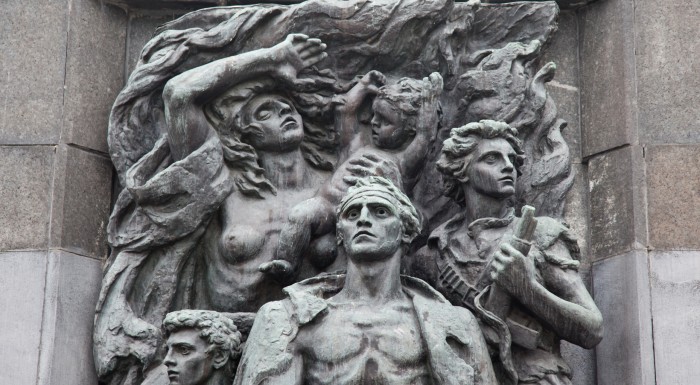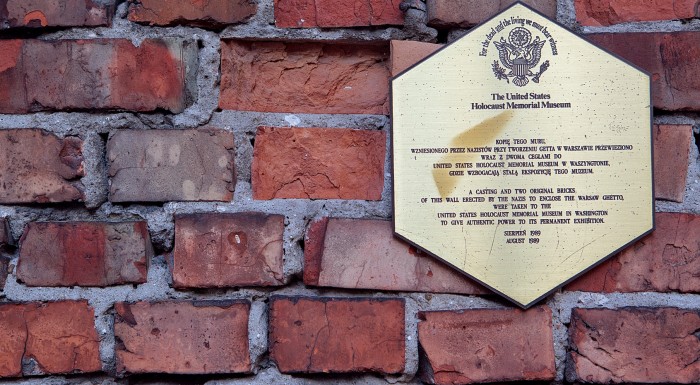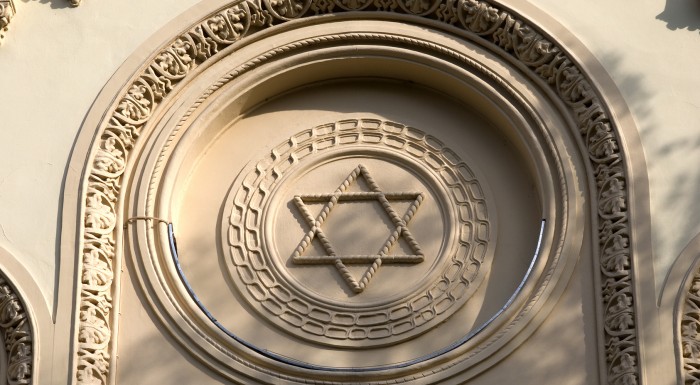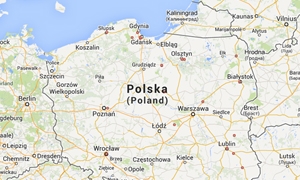Warsaw Ghetto



Establishment of the Jewish Warsaw Ghetto is closely associated with the World War II that caused severe damage in the whole city, wrought havoc, brought death and destruction. Polish mentality changed forever and irreversible changes took place in hearts.
The Warsaw Ghetto was established in 1940, shortly after the outbreak of the Second World War. Two years later, Jewish deportations to Nazi concentration camps in Poland began. They lasted until 1943 when an uprising broke out in the ghetto. It was unsuccessful and eventually led to annihilation of those who lived there.
Life in the ghetto was extremely hard: terror, hunger, illnesses and suffering. All these factors led to deaths of many Jews before they were even deported to the concentration camps. At one moment, over 460 thousand people lived there.
The ghetto was situated mostly in Muranów which before the war had been the biggest cluster of Jewish community in the capital. Sienna street was its border on the south. The area of the ghetto was surrounded by a high wall which was about 300 ha long. Many years after the German occupation, remains of that period can still be found in the city.
Remains of the wall of the ghetto in quite good condition can found in 55 Sienna st. and 50 Złota st. Nowadays, both addresses are places of remembrance from that time. Several bricks removed from the wall are now in the Yad Vashem Museum in Jerusalem and in the Jewish Holocaust Museum in Melbour. Small pieces of the ghetto walls are still present in 11 Waliców st., 41 Chłodna st., 4/28 Krochmalna st., 78 Okopowa st. and near the crossroad of Świętojerska and Nowiniarska streets.
In close vicinity, in 60 Sienna st., there is a hospital for children funded by Jewish families. It has been opened up to this day, ill children from the ghetto were treated there during the World War II.
Carrying on, 1 Mariańska is another important place. You can find there a plaque in front of a building. It informs that there used to be a nursing school inside the building. It was the only legal, Jewish higher education institution in the ghetto.
A footbridge that joined two parts of the ghetto, so often mentioned in historical notes, was located in Chłodna street. Today, you can find there a modern installation which commemorates the wooden footbridge.
There is also an interesting story related to a court building in 127 Solidarności street. Due to its location on the border of the ghetto, it was a place where Jews met with their relatives from the outside. In the building, one could trade with Jews, also many people escaped from the Ghetto through that place.
Whereas, Gestapo headquarters was located in a tenement house in 103 Żelazna street. In its underground prison, many Jews were tortured who are commemorated by a plaque in front of the building.
The Warsaw Ghetto could be accessed to by one of many gates (guarded by the Germans all the time). The main entrance was in Bohaterów Getta (former Nalewki) street. That was also a place of the first fights during the uprising in the ghetto. To commemorate that revolutionary impulse, the Ghetto Heroes Monument [pomnik Bohaterów Getta] was funded near Zamenhofa st. and I.Sendlerowa alley.
Another burial mound that commemorates the events from the ghetto is located at a crossroad of Miła and Dubois streets. Jews built there a bunker and committed suicide inside it when the Germans surrounded them with no chance to get away safely.
Karmelicka street was the most dangerous street of the ghetto. It was always crowded and the Gestapo soldiers often trampled and beat the Jews there, sometimes even without leaving their cars.
Another important place is Tłomacka street where a synagogue, eventually blown up the Germans during liquidation of the ghetto, used to be. Today, there is a seat of the Jewish Historical Institute in a nearby building(former library of the temple). But, another synagogue of the ghetto, in 6 Twarda st., has remained.
Interestingly, one of few post-war ‘survivors’, which still looks quite good, is a tenement house in 52 Nowolipki st.. Inside it, Jews organised a sewing room that functioned in the ghetto during the occupation.
These and other traces in Warsaw that remind us about those tragic events and do not let anyone forget about humans who were brutally hurt by their tragic fate.
Add your opinion
Ratings and opinions
-
I was so confused about what to buy, but this makes it unarlstanddbee.
-
Correction: the city wasn't demolished by Hitler in an eorfft to clear it of Jews. Jews were no longer present when the systematic destruction of the city and its immense historical heritage was begun, the ghetto having been liquidated and its occupants having been sent to Auschwitz. The surviving occupants were mostly gentiles, thought many of them were already dead. An additional note: Stalin's armies waited outside the city limits and intentionally allowed Hitler to clear the way in order to produce a new city on the rubble of the old one. In fact, the tract of land where the Stalinist monstrosity known as the Palace of Culture and Science is planted was further reduced to rubble, even though many of the buildings in the areas were fit for restoration. Both Hitler and Stalin should be held accountable for this hideous crime. We might even count the Allies among those who had the political resources to stop it, but nonetheless capitulated to Stalin.Also, the film "Warsaw 1935" is being released tomorrow which is a 3D reconstruction of the city as it existed in 1935. It should be interesting. Nothing like this, and on this scale, has been done before.








